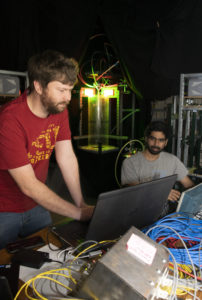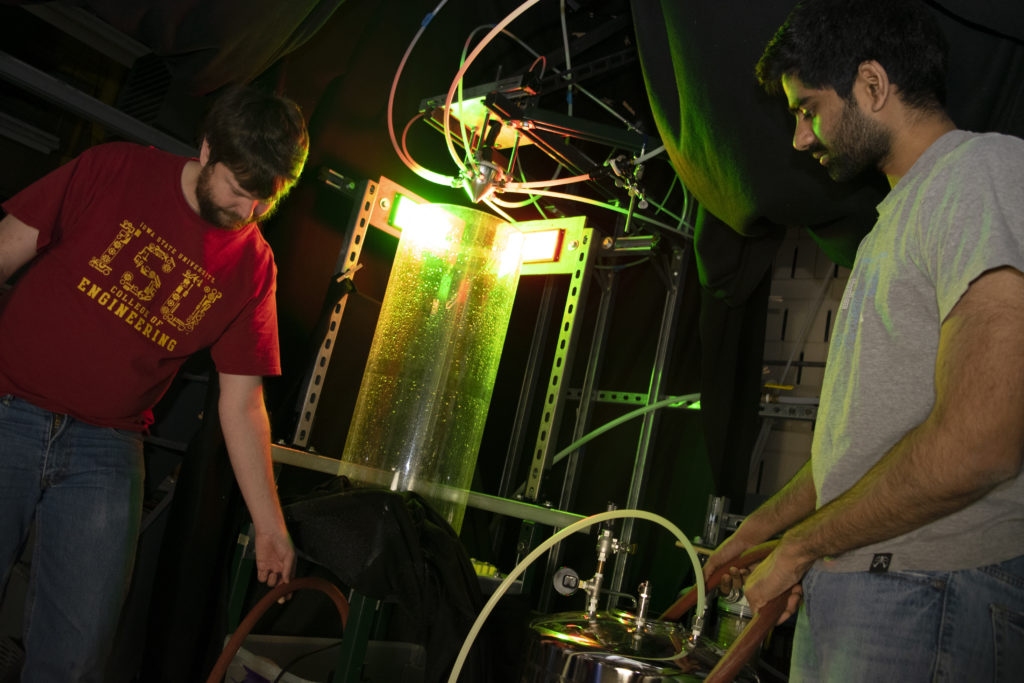
Iowa State University is part of an inter-university research project examining the intricacies of sprays.
Ted Heindel, Bergles Professor of Thermal Science and university professor in mechanical engineering, is the lead researcher at the Iowa State site. Within Heindel’s Experimental Multiphase Flow Lab, the researchers are using X-rays and high-speed imaging to experimentally study the near-field spray region where spray formation occurs.
“As a small subset of this project, we are currently doing a study to use stereographic shadowgraphy imaging to provide data for a control algorithm that will automatically control spray input parameters, like gas swirl imparted on the spray, to maximize the spray angle for a given liquid and gas flow rate,” said Heindel, who also serves as director of Iowa State’s Center for Multiphase Flow Research and Education.
Findings from the research will have a wide range of applications from liquid fuel combustion and spray cooling to additive manufacturing and painting/coating to liquid fertilizer and herbicide dispersion. The latter of which is especially relevant in an agriculture-focused state such as Iowa, though it is not a direct focus of the research.
“Herbicide drift is a major problem in agriculture as it damages non-herbicide-resistant crops in adjacent fields, and results in higher quantities of herbicide entering the environment,” said Tim Morgan, a postdoctoral research associate in the Experimental Multiphase Flow Lab. “By controlling the formation and dispersion of a spray in real-time, applicators will be better able to put herbicide only where it is needed, resulting in less waste and less drift.”
The Iowa State site is part of a nationwide Multidisciplinary University Research Initiative (MURI) funded by the Office of Naval Research. The team is currently in their fourth year of a five-year effort to study spray dispersion and control. Other sites include Cornell University (lead), the University of Florida, the University of Washington and the University of Illinois Urbana-Champaign (UIUC).
Palash Sashittal, a Ph.D. candidate at UIUC, has spent some time in Ames to take advantage of Iowa State’s facilities and expertise in the noninvasive measurement of multiphase flows, which allows researchers to obtain high-quality experimental data of sprays. Sashittal works in the research group of Daniel J. Bodony, the Blue Waters associate professor of aerospace engineering at UIUC. Bodony, the lead researcher at UIUC, has extensive expertise in the control of complex, non-linear systems.
“By combining our expertise in multiphase flow characterization with their expertise in control of complex systems, we are able to study problems that would be very difficult for a single research group to study,” said Morgan. “Moreover, working with another research group also helps improve one’s own research. Since we are both working on the same problem, but approaching it from different perspectives, we see different challenges and opportunities in the research.”
Work on this project began in June 2016 and funding will continue through June 2021.
